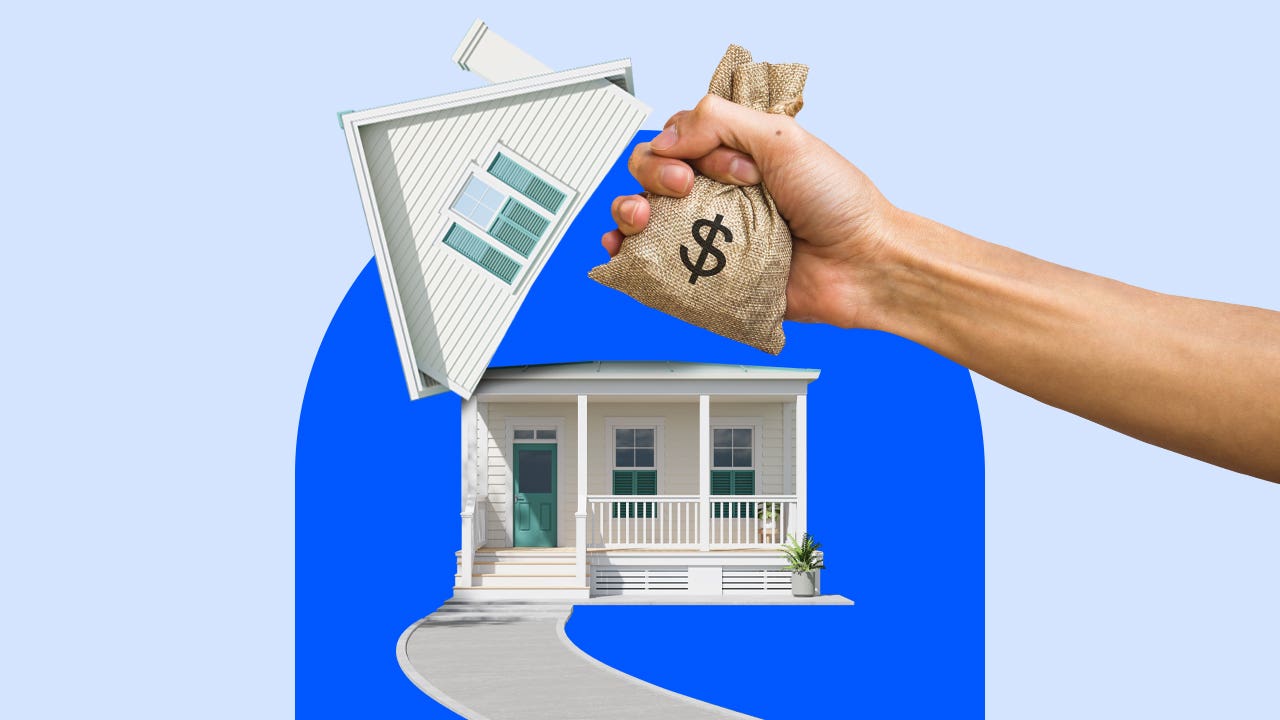What is the average down payment for first-time homebuyers?

The Bankrate promise
At Bankrate we strive to help you make smarter financial decisions. While we adhere to strict , this post may contain references to products from our partners. Here's an explanation for .
Key takeaways
- The average down payment on a house for a first-time buyer is just 8 percent, and some loan programs allow for as little as 3 percent down.
- A larger down payment can result in a lower interest rate but also limit the funds available for other homebuying expenses.
- A smaller down payment makes homeownership happen faster, but means higher monthly mortgage payments and additional costs like private mortgage insurance.
It can be challenging to save money for a down payment on a house, especially if you’re a first-time homebuyer. The standard minimum down payments for various types of mortgages might not be as high as you think, however. Here’s what to know about the average down payment on a house for a first-time buyer.
Average down payment on a house for first-time homebuyers
Many first-time homebuyers mistakenly believe they must put 20 percent down to qualify for a mortgage. Fortunately, that’s not the case.
The typical down payment for a first-time homebuyer was 8 percent in 2023, according to the National Association of Realtors (NAR). For a $400,000 home, an 8 percent down payment totals $32,000.
Compare that to repeat buyers, whose typical down payment in 2023 was 19 percent or $76,000 on a $400,000 home. Thirty-eight percent of first-time buyers reported to NAR that the down payment was the most difficult part of buying a home.
32%
Source: Bankrate 2023 Housing Market Fact or Fiction survey
How much should you put down on a house as a first-time buyer?
The amount you should dedicate to a down payment depends on your financial situation, comfort level and other factors.
51%
Source: Bankrate 2024 Down Payment survey
If you can put 20 percent down, you’ll avoid mortgage insurance and potentially obtain a lower interest rate, which can mean significant savings. You shouldn’t do this if it means draining all of your funds, though. It’s important to maintain an emergency cushion. Plus, you’ll need money for closing costs and expenses like furniture, moving and any home repairs after you move.
Even if your first-time homebuyer down payment can’t reach that 20 percent mark, buying might still make sense. Because your savings rate might never match the growth in home prices, coming up with just 3 percent down — the minimum down payment with certain first-time buyer programs — might be worth it to become a homeowner, even if it means paying mortgage insurance temporarily. Once you have enough equity (usually 20 percent), you can ask your servicer to get rid of your mortgage insurance.
Benefits of making a smaller down payment
- Own a home sooner: You can take possession of a home — and begin building home equity sooner — than if you waited to save more cash.
- Move in on your timeline: Saving for a large down payment takes time. A lower down payment can allow you to buy a home when you need to.
- Keep more money in your pocket: Moving into a house comes with costs like repairs, remodels and furniture. With a lower down payment, you can keep more of your money to cover these expenses.
- Get into a home before prices rise further: Saving a 20 percent down payment could take years, and home prices and interest rates could go up while you’re doing it.
- Maintain an emergency fund: You don’t want to drain your savings to make a large down payment. With a smaller amount down, you’ll ideally retain enough to pad your emergency fund for unexpected costs.
Drawbacks of making a smaller down payment
- Mortgage insurance requirements: Many conventional loan programs require mortgage insurance if homebuyers put less than 20 percent down. This expense can cost you an extra $30-$70 for every $100,000 borrowed per month, according to Freddie Mac.
- Less equity: A small down payment means you start out with less equity in the home. If property values drop, you could end up underwater on your mortgage, meaning you owe more than your home is worth. It’ll be a while before you can start borrowing against your equity stake, too.
- A higher interest rate: A higher loan-to-value ratio makes your mortgage riskier for your lender. As a result, they’ll charge you a higher interest rate.
- Bigger monthly payments: Putting less down upfront means you’ll have a larger loan balance to pay off. That makes your monthly payments higher.
5 years
Source: Bankrate 2024 Down Payment survey
How to lower your down payment as a first-time buyer
The lower your down payment, the easier it is to save for it. Here are some methods to lower your down payment:
Low or no down payment mortgages
Several loan programs only require a low minimum down payment on a house for a first-time buyer. Here’s a quick look at some of your options:
| Loan type | Down payment minimum | Credit score minimum | Debt-to-income (DTI) ratio maximum |
|---|---|---|---|
| *can be 500 with a 10% down payment | |||
| Conventional loan | 3% | 620 | Up to 45% |
| FHA loan | 3.5% | 580* | Up to 50% |
| VA loans | 0% | Usually 620 | Up to 41% |
| USDA loan | 0% | Usually 640 | Up to 41% |
While a lower down payment can make homeownership more accessible, keep in mind that if you put down less than 20 percent on a conventional loan, you’ll have to pay for private mortgage insurance (PMI), which protects the lender if you were to stop making payments. A lower down payment typically also means you won’t qualify for the lowest possible mortgage rate.
First-time homebuyer down payment assistance programs
Many states and local municipalities offer down payment assistance programs for first-time homebuyers, such as:
- Grants: A grant is essentially a gift that can help cover your down payment and closing costs. You never have to pay it back.
- Forgivable loans: A forgivable loan is a type of second mortgage for a specific number of years, typically with a zero percent interest rate. As its name suggests, you don’t have to repay this loan unless you move, sell or refinance before a certain time frame.
- Deferred payment loans: Like forgivable loans, a deferred payment loan is a second mortgage with a zero percent or low interest rate that you can use for a down payment. However, you’ll need to repay the loan when you move, sell or refinance.
To find out if you’re eligible for down payment assistance, ask your mortgage lender which programs it accepts and whether you qualify.
Other homebuying costs to consider
Difficulty saving enough money isn’t the only reason the average down payment on a house for a first-time buyer is usually below 20 percent. People also put down less to keep more money available for:
- Closing costs: These costs include all the expenses needed to process your loan, like the origination, appraisal and title fees. Closing costs range from 2 to 5 percent of a home’s purchase price.
- Cash reserves: Not every borrower needs to have reserves, especially if you have a strong mortgage application otherwise, but it’s still wise to have the savings stashed away if you were to find yourself unable to pay your mortgage. If your lender does require reserves, you could need anywhere from one month to six months’ worth of mortgage payments in the bank.
Down payment FAQ for first-time home buyers
-
You could explore buying in a USDA loan-eligible area since USDA loans don’t require a down payment. If you are a member of the U.S. military, veteran or surviving spouse, you could research VA loans, which also don’t require a down payment. You could also ask for a gift from friends or family to help cover the costs; you’ll need to provide your lender with a gift letter if so. Otherwise, you’ll need to keep saving up until you can afford a minimum down payment.
-
It depends on the loan program. With some loans, like a VA loan, your credit score has no impact on the down payment since there’s no down payment requirement. With others, like an FHA loan, a better credit score allows you to put less down.
-
The more money you put down, the more likely the lender will offer you a lower interest rate. A bigger down payment means a smaller loan-to-value ratio, which lowers the lender’s risk and enables them to offer cheaper financing.
-
Technically, you can pledge an asset (like stocks or land you own) to serve as collateral on the loan and reduce your need for cash. But this route can be harder to qualify for with lenders since financial assets carry higher investment risk. And some lenders may insist on cash, anyway.
Related Articles



